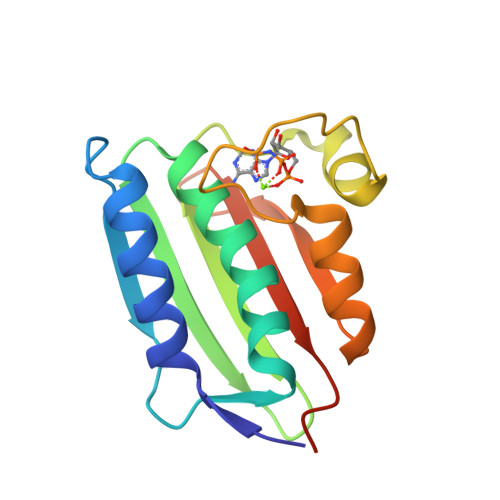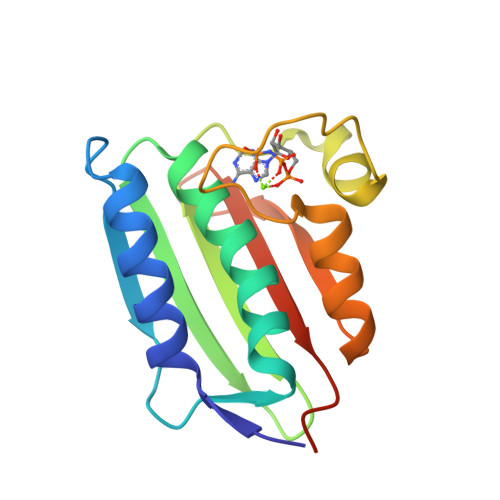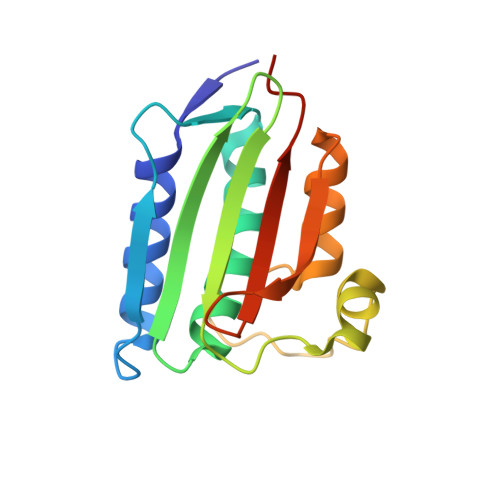Structural and mutational analysis of the PhoQ histidine kinase catalytic domain. Insight into the reaction mechanism.
Marina, A., Mott, C., Auyzenberg, A., Hendrickson, W.A., Waldburger, C.D.(2001) J Biological Chem 276: 41182-41190
- PubMed: 11493605
- DOI: https://doi.org/10.1074/jbc.M106080200
- Primary Citation of Related Structures:
1ID0 - PubMed Abstract:
PhoQ is a transmembrane histidine kinase belonging to the family of two-component signal transducing systems common in prokaryotes and lower eukaryotes. In response to changes in environmental Mg(2+) concentration, PhoQ regulates the level of phosphorylated PhoP, its cognate transcriptional response-regulator. The PhoQ cytoplasmic region comprises two independently folding domains: the histidine-containing phosphotransfer domain and the ATP-binding kinase domain. We have determined the structure of the kinase domain of Escherichia coli PhoQ complexed with the non-hydrolyzable ATP analog adenosine 5'-(beta,gamma-imino)triphosphate and Mg(2+). Nucleotide binding appears to be accompanied by conformational changes in the loop that surrounds the ATP analog (ATP-lid) and has implications for interactions with the substrate phosphotransfer domain. The high resolution (1.6 A) structure reveals a detailed view of the nucleotide-binding site, allowing us to identify potential catalytic residues. Mutagenic analyses of these residues provide new insights into the catalytic mechanism of histidine phosphorylation in the histidine kinase family. Comparison with the active site of the related GHL ATPase family reveals differences that are proposed to account for the distinct functions of these proteins.
Organizational Affiliation:
Department of Biochemistry and Molecular Biophysics, Columbia University, New York, New York 10032, USA.


















